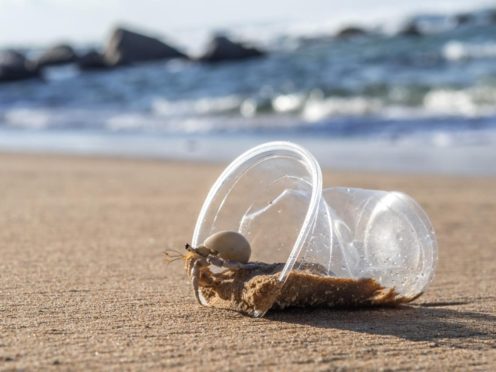Microplastics pollution is causing disruption and behavioural changes among hermit crab populations, researchers have claimed.
Academics from Queen’s University Belfast and Liverpool John Moores University authored the paper, which focused on the impact on the crabs, which require shells from snails for protection and to reproduce.
The new research has found that exposure to microplastics left them less likely to later touch or enter high-quality shells.
Lead researcher Dr Gareth Arnott, from Queen’s University, said exposure to microplastics has a detrimental impact on the crabs.
“Our research shows that exposure to microplastics can have important effects on animal behaviour. More specifically, in this case it had a detrimental effect on shell selection behaviour in hermit crabs,” he said.
“As this behaviour is vital for hermit crab survival and reproduction, there could be important long-term consequences.”
During their research, the academics divided hermit crabs between experimental tanks, half containing microplastics while the other half had no plastic.
After five days, the hermit crabs were moved into low-quality shells with the option for alternative high-quality shells offering more protection.
Dr Arnott added: “Our research shows for the first time how microplastics are disrupting and causing behavioural changes among the hermit crab population.
“These crabs are an important part of the ecosystem, responsible for ‘cleaning up’ the sea through eating up decomposed sea-life and bacteria.
“By providing a hard, mobile surface, hermit crabs are also walking wildlife gardens. They host over 100 invertebrate species – far more than live snails or non-living substrates.
“Additionally, commercially-valuable species prey on hermit crabs, such as cod, ling, and wolf-fish.
“With these findings of effects on animal behaviour, the microplastic pollution crisis is therefore threatening biodiversity more than is currently recognised so it is vital that we act now to tackle this issue before it becomes too late.”
The research is published in Biology Letters.










